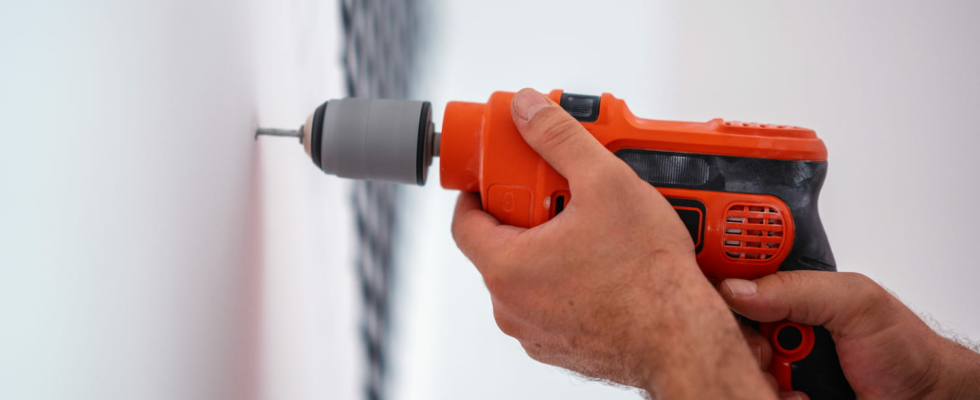To hang a decorative object or fix a piece of furniture, the first reflex that comes to mind is to drill a hole in the wall. But this seemingly simple act exposes you to a little-known and too often minimized risk.
Drilling holes in the walls of your home is a simple task that anyone can do. To hang a picture, fix a shelf or install a device, all you need is a drill, a suitable bit and drill in the desired location, taking a few precautions. While most people know that you should not drill into a load-bearing wall and absolutely avoid touching a pipe or electrical cable, another danger is still often underestimated: asbestos.
Widely used in construction and insulation materials, due to its excellent mechanical and thermal properties, asbestos is also extremely toxic, and the cause of serious lung diseases and fatal cancers. And unlike other substances, there is no exposure threshold below which the health risk no longer exists. Particularly volatile and invisible to the naked eye, asbestos is easily dispersed during work: it can remain suspended in the air for several hours and clings very easily to clothing.
The substance is so dangerous that it has been completely banned in France since 1997, but its use has been so widespread that most buildings that were granted planning permission before this year probably contain it in some form. And the Asbestos Technical Diagnosis, a document that is mandatory for buyers or tenants of a home, is only a visual and superficial analysis, which does not guarantee the absence of asbestos inside the walls, floors or ceilings.
It is therefore almost impossible for an individual to determine with certainty whether their home contains asbestos, unless they carry out a Pre-Work Report, or RAT, a lengthy and very costly analysis. As a precaution, it is therefore better to use no-drill hanging systems to fix an object to the wall, which are effective, inexpensive and easily found in most hardware and DIY stores.
If drilling is absolutely necessary, and if there is any doubt about the presence of asbestos, you must wear an FFP3 mask, overalls and disposable gloves, thoroughly moisten the surface to be drilled, then clean the dust using a damp cloth, and especially not a broom or vacuum cleaner. Better still, it is recommended to use absorbent gel tablets, to be placed between the tool and the surface to be drilled, which must then be taken to a recycling center that accepts asbestos waste.
And even if your home was built well after the end of asbestos use, these recommendations remain valid in order to protect yourself from another toxic substance: crystalline silica. Present in many materials such as concrete and facade coatings, this compound is responsible for serious diseases, such as silicosis and certain lung cancers. In general, remember that any substance other than oxygen and nitrogen that enters your lungs is potentially dangerous, and that it is best to always wear a suitable mask when doing an activity that generates dust.
